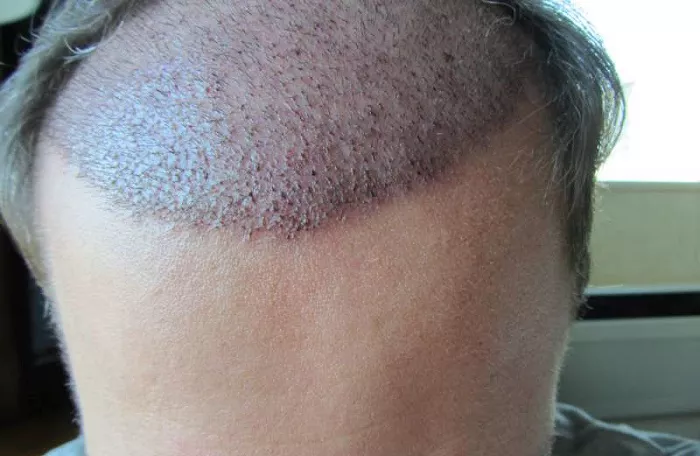Hair transplant surgery is a popular and effective way to restore hair loss and improve the appearance of thinning hair. However, after the procedure, patients may experience some temporary side effects, including swelling, redness, and scabbing. These side effects can make it difficult to hide the head after hair transplant surgery. In this article, we will discuss some tips and strategies for hiding the head after hair transplant surgery.
There are the following ways to cover my head:
Wearing a Hat
Wearing a hat is a simple and effective way to hide the head after hair transplant surgery. A hat can help cover the head and protect it from the sun and other elements, which is important for proper healing after the procedure. However, it’s important to choose a hat that is loose-fitting and breathable to avoid putting pressure on the scalp and causing further irritation.
There are several types of hats that can be worn after hair transplant surgery, including baseball caps, beanies, and wide-brimmed hats. Patients should choose a hat that is comfortable and easy to wear, and that can be adjusted to fit their head without putting pressure on the scalp. It’s also important to choose a hat that is made from breathable materials, such as cotton or wool, to avoid trapping heat and moisture on the scalp.
Hairstyling
Hairstyling is another effective way to hide the head after hair transplant surgery. While patients should avoid brushing or combing their hair for the first few days after the procedure to avoid disturbing the grafts, once the grafts have healed, patients can start styling their hair to help cover the head.
There are several hairstyling techniques that can be used to create the illusion of thicker hair and cover any areas of scabbing or redness after hair transplant surgery. One technique is to create a side part, which can help add volume and create the appearance of fuller hair. Another technique is to create bangs, which can help cover the forehead and any areas of scabbing or redness on the hairline. Layered cuts can also help create the illusion of thicker hair and cover any areas of scabbing or redness.
Scalp Micropigmentation
Scalp micropigmentation (SMP) is a non-surgical cosmetic procedure that involves tattooing the scalp to create the appearance of a fuller head of hair. This technique can be used to hide areas of scabbing or redness after hair transplant surgery and can also be used to create the appearance of hair density in areas where hair loss has occurred.
During SMP, a specialized tattoo machine is used to deposit tiny dots of pigment into the scalp. These dots mimic the appearance of hair follicles, creating the illusion of a full head of hair. SMP can be customized to each patient’s individual needs, including the color and density of the pigment used.
Camouflaging Products
Camouflaging products, such as powders, sprays, and fibers, can also be used to hide the head after hair transplant surgery. These products are designed to adhere to the hair and scalp, creating the appearance of thicker hair and covering any areas of scabbing or redness.
There are several types of camouflaging products that can be used after hair transplant surgery, including hair fibers, which are tiny fibers made from keratin or other natural materials that adhere to the hair and scalp to create the appearance of thicker, fuller hair. These fibers come in a range of colors and can be easily applied with a spray or applicator brush.
Life Tips
Here are some life tips on how to hide your head after a hair transplant:
Plan ahead:
It’s important to plan ahead and schedule your hair transplant surgery at a time when you can take time off work or other activities to allow for proper healing. This will also give you time to plan how you will hide your head after the procedure.
Wear a hat:
Wearing a hat is a simple and effective way to hide the head after hair transplant surgery. Choose a loose-fitting, breathable hat that won’t put pressure on the scalp or cause further irritation.
Use camouflaging products:
Camouflaging products, such as powders, sprays, and fibers, can be used to create the appearance of thicker hair and cover any areas of scabbing or redness after hair transplant surgery. Choose products that are safe and gentle for the scalp and follow the product instructions carefully.
Style your hair:
Once the grafts have fully healed, you can start styling your hair to help cover any areas of scabbing or redness. Side parts, bangs, and layered cuts can create the illusion of thicker hair and cover any areas of scabbing or redness.
Be patient:
It’s important to be patient and allow for proper healing after hair transplant surgery. While temporary side effects such as swelling, redness, and scabbing are common, they will eventually subside, and you will be left with a fuller head of hair.
Follow post-operative care instructions:
Follow your surgeon’s post-operative care instructions carefully to ensure proper healing and minimize any discomfort or irritation. This includes avoiding strenuous physical activity, using special shampoos and conditioners, and avoiding certain hair care products or styling techniques.
Be confident:
Remember that hair transplant surgery is a common and effective procedure that can improve the appearance of thinning hair. Be confident in your decision to undergo the procedure and in your ability to hide your head during the healing process.
Conclusion
In conclusion, there are several ways to hide the head after hair transplant surgery, including wearing a hat, hairstyling, scalp micropigmentation, and camouflaging products. Patients should discuss their options with their surgeon and follow their post-operative care instructions to ensure safe and effective healing. While temporary side effects such as swelling, redness, and scabbing are common after hair transplant surgery, they can be effectively managed with proper care and the right techniques. With patience and care, patients can achieve the full, natural-looking head of hair they desire after hair transplant surgery.
Related Topics:

